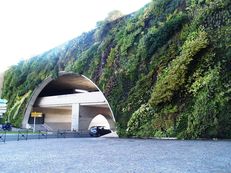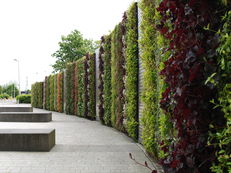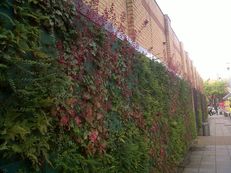Safeguarding and enhancing biodiversity
Identify habitats and species that must be safeguarded
You will have to legal requirements if any part of your campus is covered by a designation such as SSSI’s, Local Wildlife Site/Local Nature Conservation Site (in Scotland) and Green Belt. Your campus may also include habitats that are suitable for protected species such as bats, great crested newts and badgers, which you have a legal responsibility to protect. Trees may be protected by Tree Protection Orders.
Embed biodiversity in campus development plans and contracts
An agreement with your estates department and any other senior managers to embed environmental and biodiversity specifications within contracts for new developments is vital for biodiversity on campus. Aim to agree on the following basics:
- Architects and landscape designers will have experience of maintaining and enhancing the natural features of a site;
- An assessment of potential biodiversity impacts is undertaken before selecting a site and beginning the design;
- The development will be designed in a way that protects existing biodiversity features;
- Biodiversity enhancement is undertaken as part of the development e.g planting trees, wildflower meadows, Sustainable Drainage Systems (SUDS), green roofs, bird and bat boxes, and that;
- The construction process protects biodiversity from damage e.g. by fencing off an exclusion zone around trees to prevent root damage or by placing a bund around water bodies to prevent pollution.
Also aim for an agreement to construct new buildings according to the BREEAM standard and ensure that a wide range of the BREEAM biodiversity criteria are used to promote long term biodiversity management in new developments.
Consider nesting and roosting sites
- Prior to any building work, identify and protect existing places used by bats and birds (e.g. cavities, flat roofs).
- Remember that disturbing bats is illegal. All Statutory Nature Conservation Organisations for England, Scotland, Wales and Norther Ireland provide a free visit to advise on how you can avoid disturbance to bats when carrying out building work.
- Provide cavities and specialist boxes in walls, facades and roofs for invertebrates, birds, swifts and bats.
- Incorporate ledges for birds such as house martins and kestrels.
Develop green roofs
Green roofs (also living roofs and brown roofs) are fantastic for biodiversity. They provide new habitats for wildlife and can be important feeding and nesting habitats for birds. Even the black redstart, a unique and rare breeding bird in the UK, has been found to use them. Green roofs also provide ‘Ecosystem Services’ by extending the life of roofs, regulating building temperature, reducing water run-off and creating a visually attractive building.
Case Studies
The Michael Smith Building Quad, University of Manchester
Edge Hill’s new Sports Centre development strives to enhance levels of biodiversity







 Except where otherwise stated, content on this site is
licensed under a Creative Commons Attribution 3.0 License.
Except where otherwise stated, content on this site is
licensed under a Creative Commons Attribution 3.0 License.
